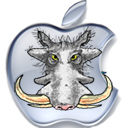
LabAnalyst X has seven menus, plus instructions and links in the Help menu and three functions in the LabAnalyst X menu.
 |
Warthog Systems file formats
LabAnalyst X has seven menus, plus instructions and links in the Help menu and three functions in the LabAnalyst X menu. |
These sable-image icons will will not appear on a Windows machine, or if an SSCF or ExpeData file was created on a Windows machine and then copied to a Macintosh (a generic 'text' or '.exp' icon is used instead). Text format (ASCII) The format for ASCII input is a simple spreadsheet with commas or tabs as column delimiters, with each row terminated with a carriage return. There can be up to 32 columns (although only 24 can be entered into the final warthog file). The first line can contain column labels.
|